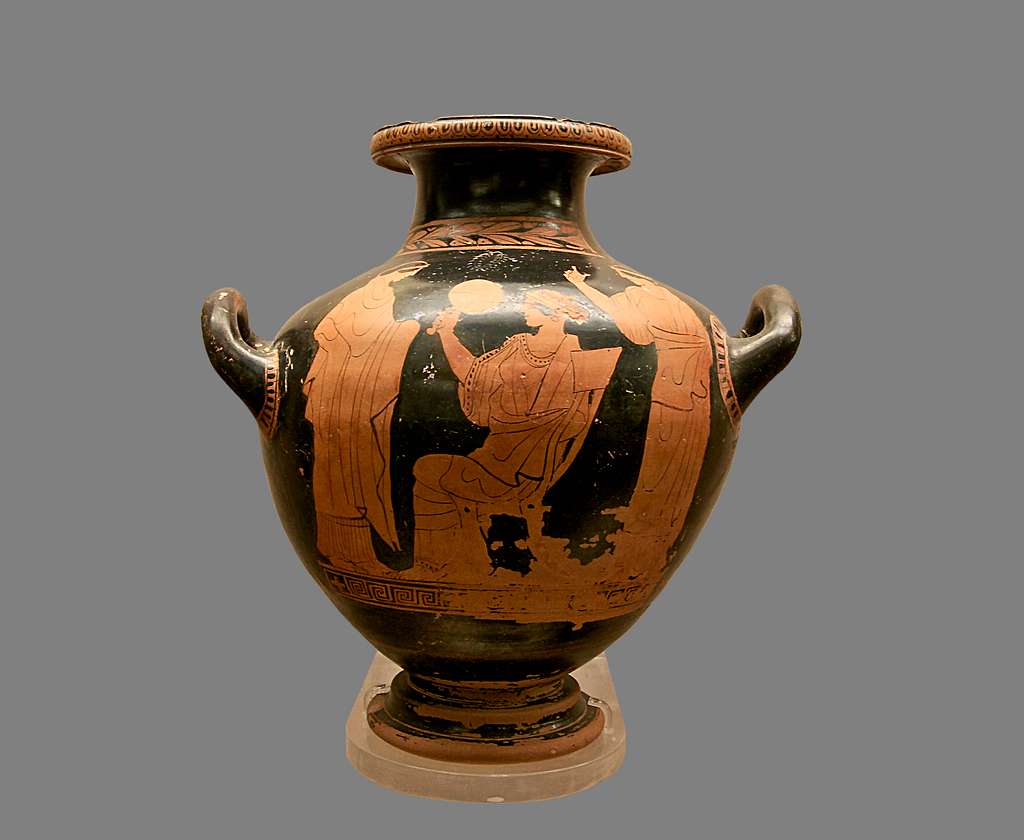Some of the most beautiful ancient artefacts ever discovered are the ornate vases created and used by the ancient Greeks. But what were these vases actually used for? Was their purpose purely decorative, or was it more utilitarian in nature?
Ceramics were widely used throughout ancient Greece. Greek vases were largely functional objects. However, many were exquisitely decorated and beautiful to behold. Ordinary working people may have lacked the means to decorate their homes with great works of art, but ownership of beautiful pottery seems to have been fairly common.
Ancient Greeks used ceramics for a wide variety of purposes, including the storage and transport of goods, the mixing of various materials (including foodstuffs), making and serving food and drink, and as perfume containers, among other uses.

Well known types of ancient Greek vase or vessel include the hydria (which, as the name suggests, was used for carrying water), kylix (a type of cup), kantharos (a more ornate cup with handles), lekythos (used for oil), phiale (a libation bowl), skyphos (two-handled wine cup), oinochoe (wine jug), loutrophoros (a double-handled vase with an elongated neck), and, of the course, the classic amphora.
Of these, some appear to have had highly specialised functions. The lekythos, for example, was often used in funerary rituals. It contained precious oils, and was usually left on the grave of the deceased. A kantharos, with its ornate and distinctive design, may have had a more spiritual purpose (for example, making offerings of wine to the God Dionysus) than a regular drinking cup.
Other types of vessels appear to have been highly symbolic, as well as functional. The loutrophoros (its name being shared at one time with the person responsible for ritually bathing a bride before her wedding) was used to carry the water for this ritual bath, but may also have been symbolic of a person who passed away before they were married.
Amphorae, for their part, had more general uses, such as the storage or transport of wine, water, oil, milk, or grain.
Greek pottery was used for everything from the mundane and functional to the deeply spiritual. However, the most common uses for vases and other pottery seems to have been everyday tasks such as transport, storage, and the preparation and consumption of food and drink.
It is thanks to the wealth of pottery left behind by the ancient Greeks that we know as much as we do about the lives of ancient Greek people.
Pottery is tough, and able to withstand the ravages of time and nature. It seldom appeals to grave robbers and thieves, and it can tell archaeologists a great deal about what production methods were in use at the time, as well as what life might have been like for the craftspeople who made it, and the people who eventually owned and used it (assuming they were not one and the same).
The Greeks decorated their pottery with beautiful geometric patterns, and later with scenes from their colourful myths and legends that still inspire the world today.
It is arguable, then, that a further function of Greek vases was to inform and inspire their owners, to bring a smile after a hard day, and, just like many household objects of today, add to that easy familiarity that we call ‘home’.
